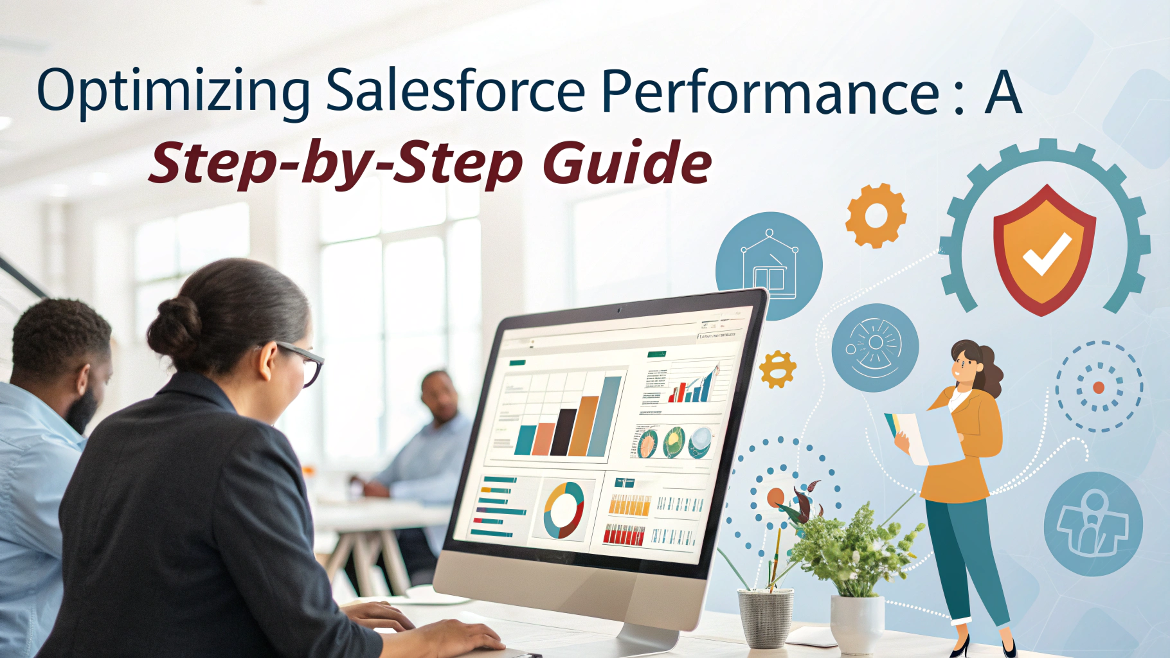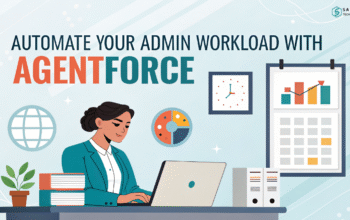Discover expert tips and actionable steps in our comprehensive guide to optimizing Salesforce performance. Learn how to enhance speed, streamline processes, and improve user experience with these practical strategies.
Introduction
Salesforce is a cornerstone for businesses looking to manage customer relationships, improve sales, and optimize workflows. However, as your Salesforce environment grows and your organization scales, performance issues can arise—slowing down workflows, causing frustration, and diminishing productivity. If you’re facing sluggish load times, inefficiencies, or delays, optimizing Salesforce performance is crucial.
In this step-by-step guide, we’ll walk you through effective strategies for improving the performance of your Salesforce instance. These tips are designed to boost system speed, enhance user experience, and improve overall efficiency. Whether you’re a Salesforce admin, developer, or power user, these optimization practices will ensure you get the most out of your CRM.
1. Monitor and Assess Salesforce Performance
The first step to optimizing Salesforce performance is understanding how well your system is functioning. Regular monitoring is key to identifying potential bottlenecks and performance issues early.
Salesforce provides a variety of tools to monitor system health and performance, including:
- Salesforce Debug Logs: These logs can help you identify issues in code execution that might slow down performance.
- Salesforce Health Check: The Health Check tool allows you to assess the security and performance settings in your Salesforce environment and get actionable recommendations.
- Event Monitoring: This feature lets you track performance metrics in real-time, including API call volumes, response times, and usage trends.
By regularly assessing your system’s performance, you can pinpoint areas that need improvement and take action before they impact business operations.
2. Optimize Data Management Practices
Data is the backbone of Salesforce, but poorly managed data can severely hinder performance. To optimize your Salesforce instance, focus on cleaning up data, structuring it efficiently, and archiving old records.
- Data Cleanliness: Ensure your data is clean and relevant. Salesforce’s Duplicate Management tools help eliminate duplicate records, improving both data quality and performance.
- Efficient Data Models: Review your Salesforce object model. Remove unused custom fields and objects, and streamline relationships to avoid unnecessary complexity.
- Archiving Old Data: Over time, Salesforce instances can accumulate large amounts of historical data. Archiving older records using tools like Salesforce Data Loader can reduce the strain on your system, speeding up queries and improving overall performance.
3. Optimize Reports and Dashboards
Reports and dashboards are often the most frequently used features in Salesforce, but they can become slow and cumbersome if not optimized properly.
- Simplify Reports: Complex reports with multiple filters and formula fields can slow down the system. Instead, use summary reports to aggregate data and reduce the load time.
- Limit Data: Use filters to limit the data pulled into reports and dashboards. Ensure your reports are pulling only the most relevant data to improve efficiency.
- Optimize Dashboards: Dashboards can slow down due to the number of components or data they display. Limit the number of components on a dashboard and focus on high-priority data to speed up loading times.
4. Streamline Apex Code and Triggers
Apex code and triggers allow you to customize Salesforce, but inefficient code can negatively impact performance. Optimizing your code is a critical step in speeding up the system.
- Bulkify Your Code: Apex code should be bulkified to process multiple records at once. Avoid querying data inside loops, as it can quickly lead to performance degradation.
- Minimize Trigger Recursion: Recursive triggers can lead to endless loops, which not only slow down performance but also risk hitting governor limits. Control recursion with static Boolean variables.
- Efficient Queries: Optimize your queries by using selective fields and filters, avoiding the retrieval of unnecessary data, and ensuring queries are indexed for faster retrieval.
5. Leverage Salesforce Lightning Experience
Salesforce Lightning is designed with performance in mind. If you’re still using Salesforce Classic, it may be time to consider migrating to Lightning Experience for enhanced performance and user experience.
- Faster Page Loads: Lightning offers faster page loads compared to Classic due to its modern architecture.
- Optimized UI Components: The Lightning Experience leverages optimized components, making it more efficient and intuitive. Custom Lightning pages can be built using drag-and-drop features for faster performance.
- Lightning App Builder: This tool allows you to create personalized and efficient pages tailored to specific user needs. By minimizing the components on each page, you can reduce load times and improve the user experience.
6. Utilize Caching and Content Delivery Networks (CDNs)
Caching and the use of CDNs are powerful methods to reduce server load and improve Salesforce performance, particularly for frequently accessed data.
- Page Caching: Salesforce offers page caching for Visualforce pages, which can significantly speed up page loading times by storing frequently accessed data temporarily.
- Use of CDNs: For external resources like images or scripts, consider using a CDN. By caching static content on geographically distributed servers, CDNs can reduce load times and improve performance for global users.
Conclusion
Optimizing Salesforce performance is not a one-time task, but an ongoing process that requires constant attention. By regularly monitoring performance, optimizing data management, fine-tuning reports, and ensuring efficient coding practices, you can significantly boost the speed, reliability, and overall efficiency of your Salesforce environment.
The strategies outlined in this guide will help you maintain a Salesforce instance that is not only fast but also scalable as your business continues to grow. Remember, small changes can make a big difference when it comes to improving system performance and boosting productivity.
Explore More Articles :



